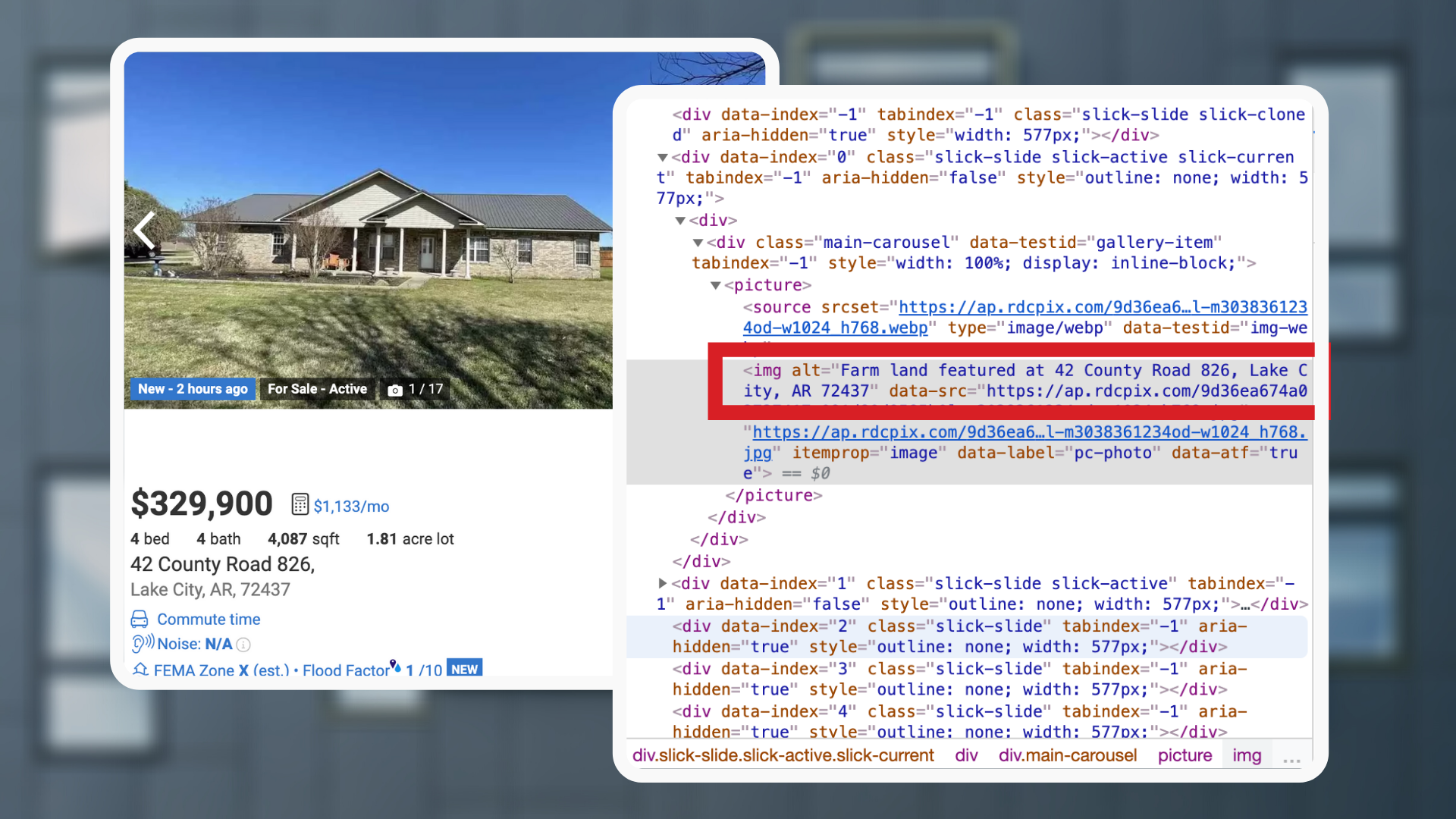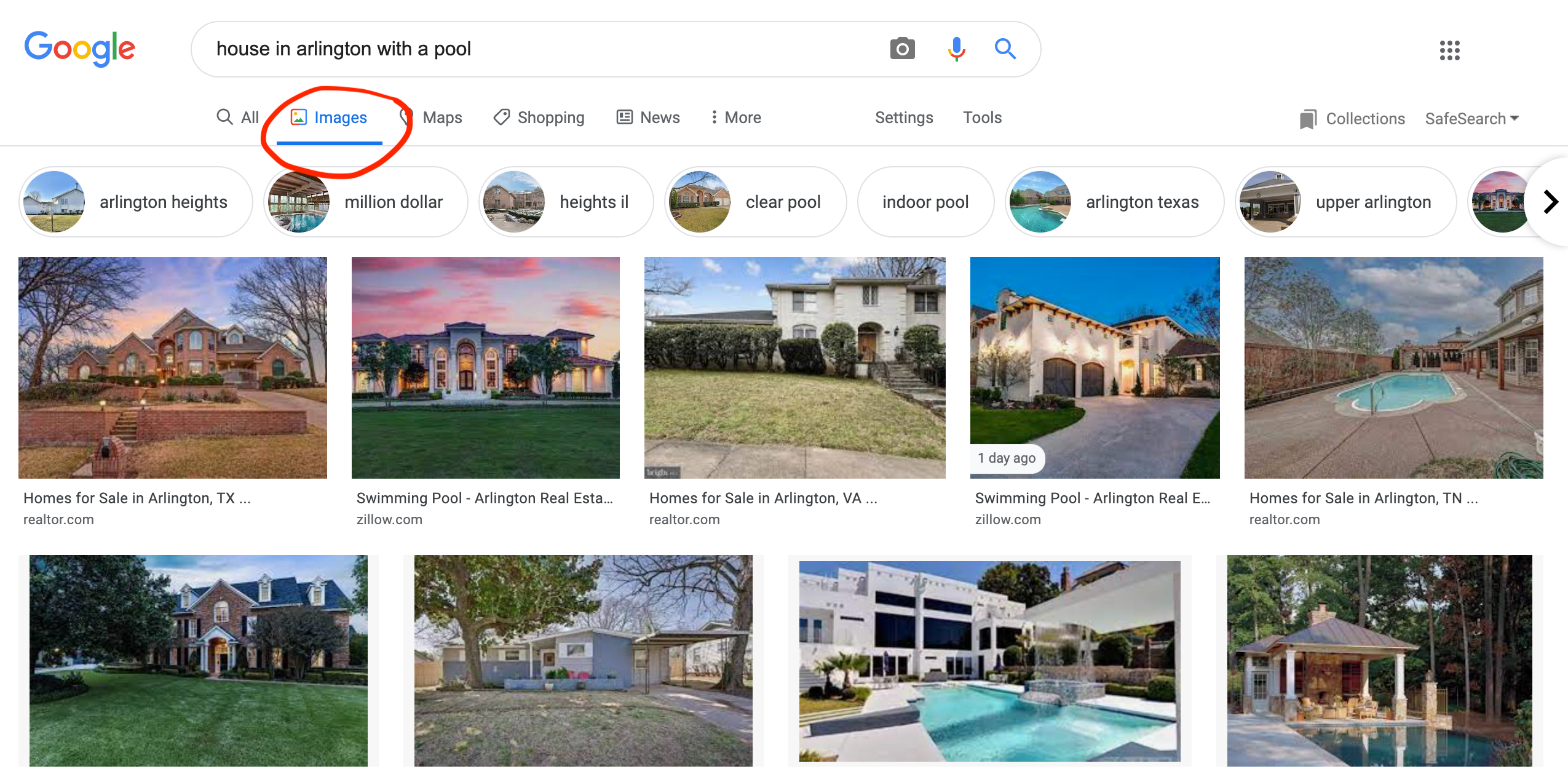By Helena on 7 April 2021
During the past decade, lead generation efforts in real estate, as in every other industry, have shifted their focus towards online channels. Large property portals have built marketing teams to advertise and position their brands and drive traffic to their online sites.
As a result, SEO has become a battlefield. With most properties being featured on dozens of similar websites, it is becoming harder and harder to improve search rankings and make your website stand out.
However, there are still some SEO areas whose full potential remains untapped, and one of them is image alt-tags.
First, what is alt text?

Alt text (or alternative text) is a snippet of written copy that comes attached to images on websites and helps search engines:
- understand the context of image files
- deliver a property description in case the image fails to be displayed
Real estate websites have thousands and thousands of images. However, alt text tends to be empty in most cases.
The reason for that is quite simple. When uploading listings on a site, only a fraction of agents provides captions for every image, which means that the website or portal is left with thousands of images with no textual context whatsoever.
As a result, most portals or websites leave image alt tags blank or create simple automations to populate them with the property’s address or ID, which provides very little to no value.
What exactly is the value they can provide?
Well, below we’ve listed 3 reasons why you should use alt tags and how you can make the most out of them. Let’s get into it.
1. They improve your image SEO
The most straightforward and simple reason to optimize every property photo’s alt-text is to improve the Google ranking of your images.
Now, as much as we are aware of how big of an impact images have on property listings, when it comes to filling in that “alt text” or caption field, we tend to skip the step. ‘It takes too long and, in the end, that little detail doesn’t make any difference, does it?’
When Google’s crawlers scan your site, they don’t “understand” your photos based on what they look like, but instead, they rely on things like the image’s alt-tag, title tag, and image file name. That means that when you are not using an alt-tag, you’re missing out on a valuable opportunity to provide Google more context about your images.
Plus, if we factor in the reality that in real estate, hundreds of websites compete displaying identical properties with the same exact images, there is virtually no way you can stand out if you don’t leverage unique alt tags.
You might still be thinking “Why is ranking high for images so important?”
Well, consider this. Over 22% of US Internet Searches are from Google Images. That’s 1 in 5 searches, and it doesn’t end there, because they account for 20+% of ALL Internet searches in total.

That means if we upload a new property and aren’t populating image captions, chances are we are losing a ton of potential visitors. Furthermore, homebuyers tend to have very specific features in mind for their dream home. Their unique desires can range from light hardwood floors to dark granite countertops to a festive back patio or thousands of other features.
Populating image tags including relevant information can attract highly-specific and qualified traffic to your site, make your listings stand out and improve the chances of conversion.
2. They improve your overall web SEO
Adding descriptive text to pictures is among Google image best practices. The reasons for that are quite simple.
- First, and most importantly, they contribute to topic relevance. Google not only looks at the text to understand what a website or a specific page is talking about. It also looks into how relevant the images are inside that page. By adding alt text to each picture, we reveal relevant information to Google that they will use to better assess the content. With property listings being so similar across different sites, having unique image alt tags is essential to making each page stand out to Google’s crawlers. The more information they have, the better the chances are of ranking higher and attracting more visitors. In fact, portals like homes.co.nz, have seen a 40+% increase in their overall Google traffic after implementing a solution to populate alt tags.
- Second, alt text was designed for website accessibility. Visually impaired people use screen readers, devices that read the content of a website out loud to help people with vision loss navigate through websites. Screen readers read alt tags in order to give context regarding on-page images. We will talk about this chapter and verse in a separate blog post, but alt tags are a must-have if you want to ensure all visitors can enjoy your site and comply with the Americans with Disabilities Act (ADA) and the Website Content Accesibility Guidelines (WCAG). Plus, Google is rewarding sites that provide a good user experience, and one of their metrics is website accessibility.

- Third, alternative text is what the browser would show in case your images don’t load on a given page. Let’s imagine that a user accessing the listing has a low-bandwidth connection, or that something happens, and your image repository breaks. If your image can’t be accessed for any reason, alt tags will be able to provide some context.
- Fourth, and finally, Google is increasingly moving towards a visual-first approach. In fact, even for text search queries, images are increasingly at the forefront of Google SERPs. Therefore, paying attention to image fields like captions or title tags will be increasingly relevant.

To sum it all up, adding captions to your images, and that search engines can better understand them, which is highly rewarded by Google algorithms.
3. They make you stand out from competition
Image alt tags are still being disregarded by most real estate sites. So much so that we’ve decided to test it. We will analyze how the top portals perform in terms of image SEO.
Let’s launch a small search experiment, and see what happens. These are the results for the query “2 bedroom homes in Atlanta, GA”. 
As you can see, many of the results belong to real estate portals. This is good, yet, that query is extremely vague and unspecific. With a population of over 5 million people, I bet there are hundreds of 2-bedroom homes in Atlanta. However, ranking in Google images for those keywords still has value.
Let’s see what happens when we launch a much more specific query, like “2 bedroom homes with rustic kitchen and granite counters in Atlanta”

Although the results may contain relevant images, very few of them actually belong to real estate sites. Instead, the images lead to design inspiration websites, like Houzz or Pinterest, or landing pages to hire renovation contractors and so on.
This fact hints that even the biggest portals in the US and other markets may be missing out on an extra traffic opportunity, but first, let’s verify this. Let’s look at 3 of the top portals in the US.
- Zillow. As one of the biggest players in the industry, they are acclaimed by many of their website features. However, in terms of populating alt tags, they do quite poorly. As you can see below, in the highlighted code, alt tags are empty.


- Redfin. On their site, we face a slightly different scenario. When we inspect their images, we come across alt tags that have been filled in with the property address.

However, despite the fact that screen readers might be able to “read” the information included, the content (i.e. “9 Passing Sky Dr”) is not relevant enough for visually impaired people to understand what’s in the image. 
Moreover, this kind of alt text provides minimal SEO value, as the 20, 30 or even 50+ images on a listing will all feature the exact same descriptions. Instead, captions should include frequently-searched keywords and diverse captions that accurately depict the picture, in order to provide a better user experience and rank higher in search results.
- Realtor.com. This is the first example where we find some kind of effort on alt tags. Every picture has its alt tag including the type room and the property address, but without mentioning any specific room features. We must say this is already slightly better than the average, but their properties will only rank by room type and city, and taking into account the number of properties in Arlington that have a bedroom or a living room (probably most of them), the value they add, although relevant for screen readers, is a missed opportunity in terms of SEO.


Automating image alt tag generation with AI
If you read this far, it probably means you are curious about how much you could grow your traffic with alt tags.
If you are still wondering how to implement something like that without spending too much money or too much time on it, wonder no more.
Nowadays, we are able to automatically generate property image captions instantly using an AI-based solution that analyzes images and outputs relevant text information in an alt tag format. With a simple API integration, all your listings can be populated with SEO-rich, descriptive and traffic generating alt tags.
If you want to see how this boosted Google traffic for homes.co.nz by a whopping 46% and improved their overall Google rankings by 10%, just go check out our Case Study.
And if you’re ready to test it with your listings, ask us for a free PoC!



comments